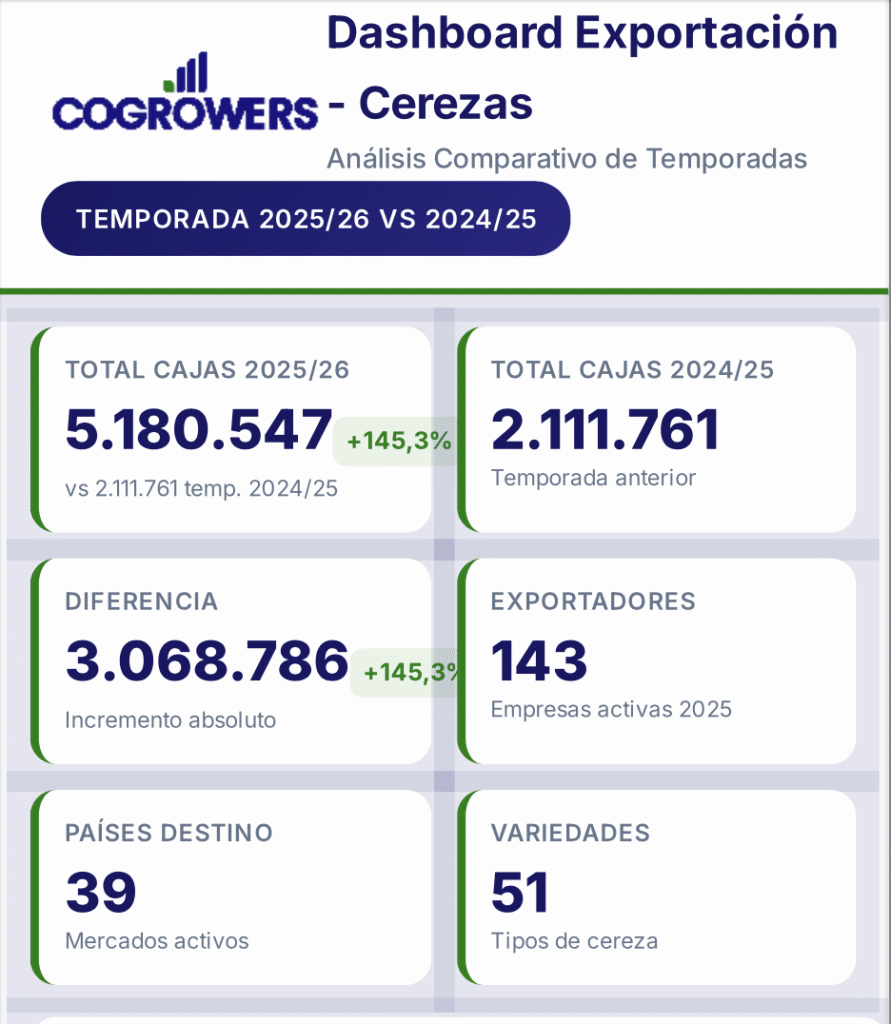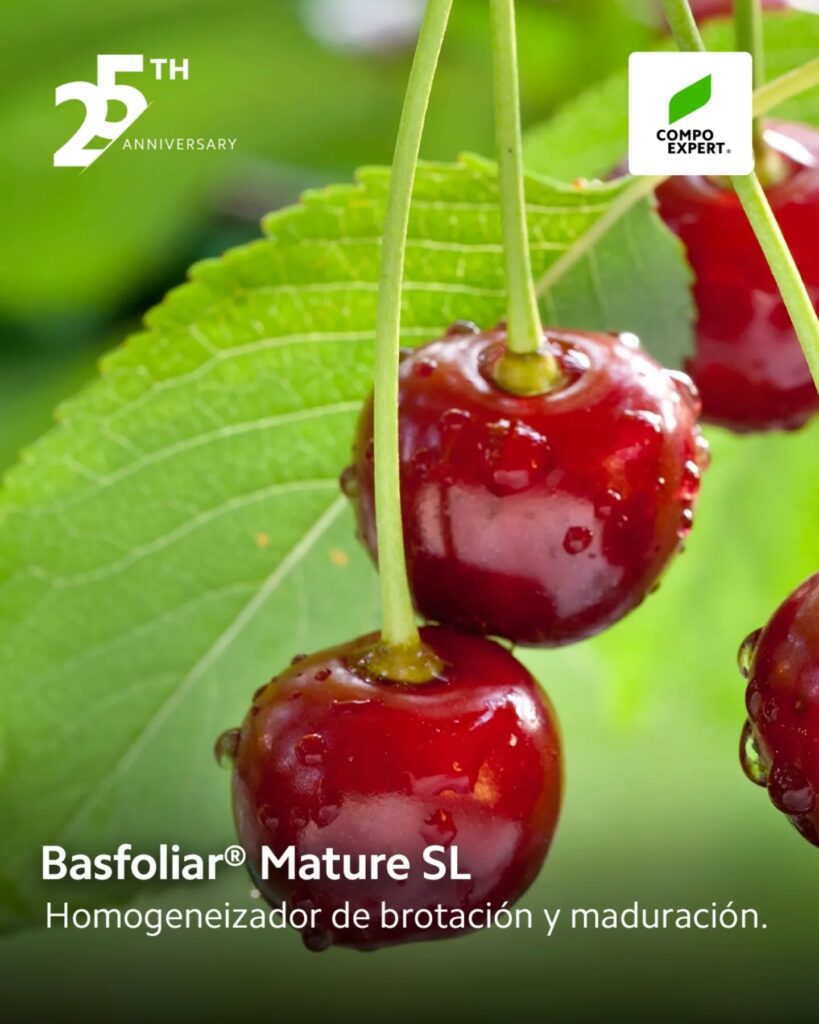Although 80 percent of cherry production in our country is concentrated in the O'Higgins and Maule regions, the later areas are gradually gaining ground.
The growth of the Chilean cherry industry has generated not only better quality and caliber fruit, new markets and a sustained increase in the number of hectares planted with this fruit species, but also the existence of orchards in areas previously unthinkable.
Today, Chile has cherry plantations from latitude 32º, Ovalle in the north, to latitude 46º, Chile Chico in the south. It is estimated that in the later areas, Chile has around 3,000 hectares of cherry trees.
“We are already in the first week of 2022 and we are already beginning to see the first signs of harvests in the later areas, mainly from the ninth region to the south, with the most Patagonian cherry being that of Chile Chico; it is estimated that in a large part of the southern and austral area, due to the effect of the high temperatures and the lower rainfall in recent months, we will have a harvest season a little earlier than normal and perhaps a little more concentrated than we are used to,” explained Carlos Tapia, specialist advisor in cherry production and Technical Director of Avium.
To date, the first harvests are already being seen in the area around Osorno, earlier than in other seasons, which normally begin around January 10.
“For my taste, we are 4-5 days ahead; the Skeena and Kordia harvests could come immediately after, and then the Regina harvest. There have been some days of very high temperatures, which are unusual in these areas and that could accelerate the phenological processes of ripening,” Tapia added.
Another important point is the rainfall events present in the late areas.
"In There have been some rainy days in recent days and there is also a forecast of precipitation for this weekend which could eventually make producers who are about to harvest or are in the process of harvesting a little more nervous about the sensitivity to cracking of some important varieties, such as Lapins and mainly Kordia; Regina, which is a variety that is much more tolerant to cracking, is not always so feared, but with a higher concentration of sugar it can certainly have a smaller effect in terms of cracking, but with less importance than the other two varieties.” the specialist warned.
Regarding the season in later areas, Regina and Lapins have a very good load: “Kordias are lighter, but it is also unfair to compare them with other varieties that generally have a completely different production performance than Kordia,” explained Carlos Tapia.
It is expected that the specialized labor force that has participated in the harvest in earlier areas or that is taking part in the fruit harvesting work in areas where cherries are still being harvested will be called upon by producers in later areas, in order to have a specialized and efficient workforce that will allow them to successfully finish the 2021-22 season, which has been characterized by excellent fruit.
“In terms of quality, the quality is quite good. We do not see any major problems with pest damage, mainly with Drosophila suzukii. We believe that the programs have been carried out with great accuracy and this has allowed us to see that the cherry in the late zone is very healthy from a phytosanitary point of view, with no problems for export,” concluded Tapia.








